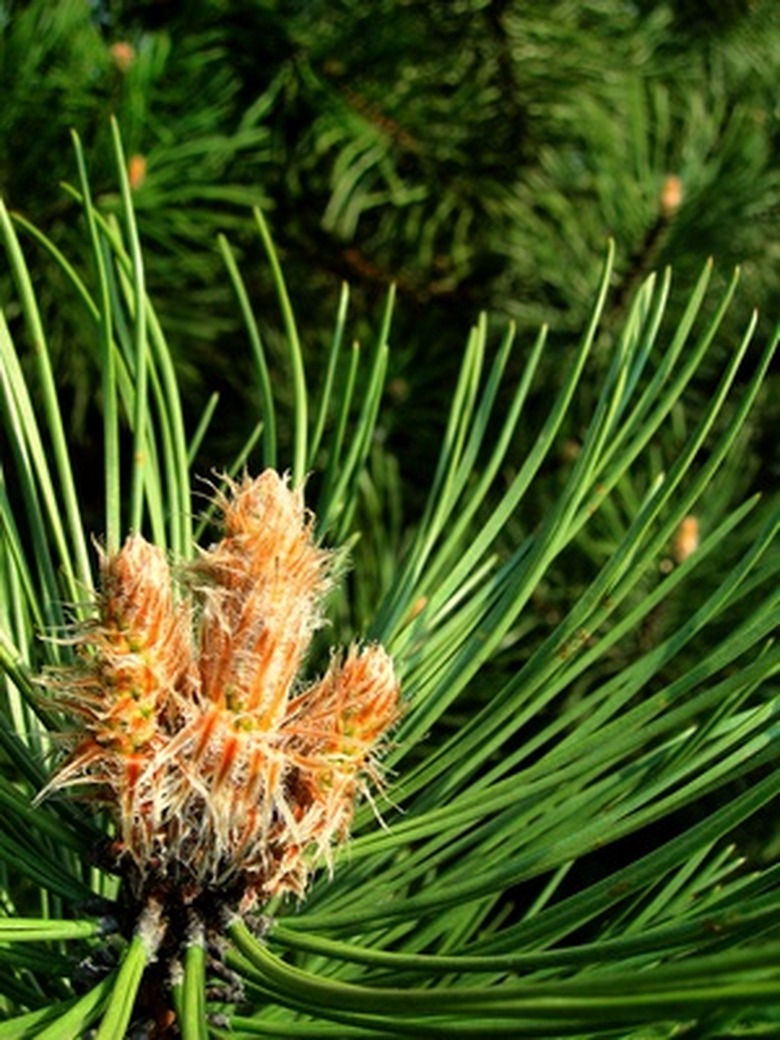Small Pine Evergreen Trees
With 120 different species, pine trees are evergreens with fissured bark. Originating from the Northern hemisphere, pine trees range from less than 25 feet tall to those that grow up to 100 feet tall. All pines trees require well-drained soils and full sun to flourish and thrive. They are also very adaptable and look striking in the winter, as their colors remain vibrant.
Bristlecone Pine
The bristlecone pine is a small evergreen with a slow growth rate. Compared to other pine trees such as the ponderosa that grows up to 90 feet tall, the bristlecone pine is a small variety that grows between 8 to 20 feet high and 10 to 15 feet wide. The bristlecone pine has a medium texture and a dwarf, shrubby form with an irregular spread. The bluish green needles grow just over 1 inch long and in clusters of five. The cones are cylindrical and grow 2 to 4 inches long. Bristlecone pine trees need to be protected from drying winds and are not tolerant of air pollution. They prefer full sun and can grow in a range of soil types, including sandy soils. Bristlecone pine trees are drought tolerant and ideal planted among a rock garden. The USDA hardiness zones are 4 to 7.
- With 120 different species, pine trees are evergreens with fissured bark.
- The bristlecone pine is a small evergreen with a slow growth rate.
Dwarf Loblolly
Dwarf loblolly pines have a slow growth rate and medium texture. Their compact, billowing form has an abundance of tiered branches. Dwarf loblollies grow up to 20 feet tall and 10 to 15 feet wide, making for a small pine tree variety. The long green needles on the dwarf loblolly are dense and grow in bushy clusters with three needles per bundle. The bark on the dwarf loblolly is brownish red and contrasts with the green foliage. Dwarf loblolly pines require full sun and grow in a wide range of soil types, including sand and clay, making this tree very versatile. Dwarf loblollies are also drought tolerant. The USDA hardiness zones are 6 to 9.
- Dwarf loblolly pines have a slow growth rate and medium texture.
- The bark on the dwarf loblolly is brownish red and contrasts with the green foliage.
Mugo Pine
These slow-growing evergreens grow between 15 and 20 feet tall. The medium texture and low spreading form is bushy and broad. The mugo pine tree has rigid needles that are dark green to medium in color. They grow between 1 to 2 inches long with a curved shape. The needles turn to a yellowish green in the winter. The erect cones on the mugo pine grow 1 to 2 inches long and occur in clusters of three to four. As the cones mature, they turn to a grayish black. Mugo pine trees prefer full sun to partial shade and well-drained, deep, moist soils to thrive. Mugo pines can also tolerate clay soils. The USDA hardiness zones are 2 to 8a.
- These slow-growing evergreens grow between 15 and 20 feet tall.
- The erect cones on the mugo pine grow 1 to 2 inches long and occur in clusters of three to four.
